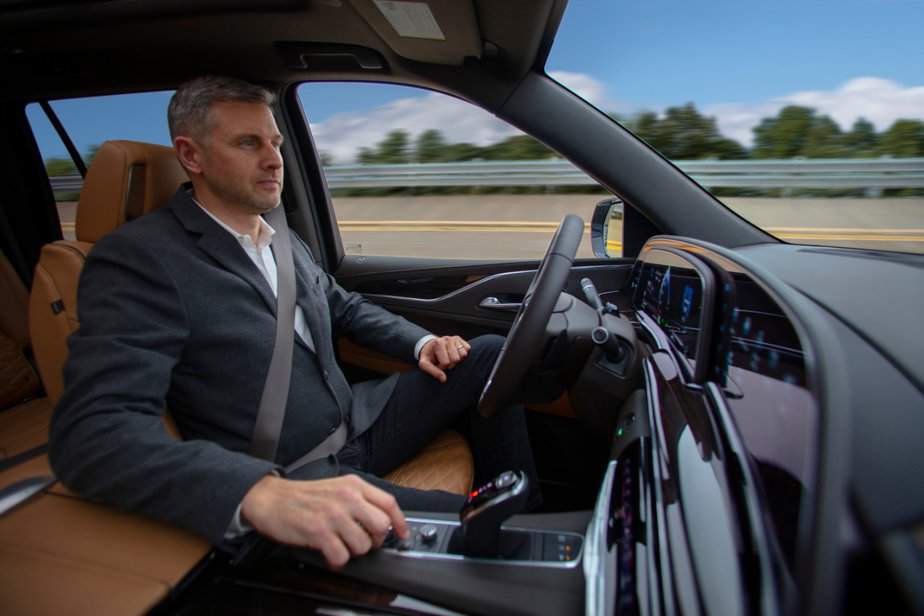Automated Lane-change Systems a Bold Step Forward
Automated lane-change systems a bold step toward a driverless-transportation future
By Tim Spell
Movement toward a future of driverless transportation is dependent on boosting consumer confidence via the gradual introduction of autonomous features. Automatic lane-change systems by Cadillac and Tesla are among recent technologies that enhance the autonomous-driving experience.
Cadillac’s automated lane-change feature will be introduced as part of its Enhanced Super Cruise driver-assist package on 2021 Cadillac CT5 and CT4 sedans, and later on its all-new 2021 Escalade SUV. Tesla models are available with Auto Lane Change and Navigate on Autopilot, which are included with the Full Self-Driving Capability package.
Lane-change systems for both manufacturers are semiautonomous and require driver interaction. While a lane switch may be suggested, the driver decides when to execute the maneuver and has the ability to override the operation. It will “allow the hands-free system to change lanes on compatible highways,” Cadillac reports, “when requested by the driver and certain conditions are met.”
The International Organization for Standardization, which labels the technology “Partially Automated Lane Change Systems,” states: “The driver always assumes responsibility for this system, and the driver’s decisions and operations take priority at all times.”
ISO reports that road conditions also must be suitable for the technology to operate. Roads must have visible lane markings and areas where non-motorized vehicles and pedestrians are prohibited. Advanced technologies, such a LiDAR map data and real-time GPS, are employed to provide a comprehensive awareness of the surroundings to determine the feasibility of an automatic lane-change maneuver.
Changing lanes is among the most dangerous action a driver can take, so allowing a vehicle to automatically execute the maneuver can be interpreted as progress toward safety or a great risk. It depends on the acceptance level of the robotic technology.
In a 2019 Insurancequotes.com survey, “Who do you trust more: Man or Machine?”, 51 percent of those surveyed say their biggest concern about self-driving vehicles is the possibility of technology error or failure.
A dependable automatic lane-change system would take the burden off the driver because, according to the National Highway Traffic Safety Administration, “changing lanes requires high attentional and visual demand compared to normal highway or freeway driving, due to the need to continually monitor areas around the vehicle. This increased attentional and visual demand makes lane changing one of the riskiest driving maneuvers.”
The driver has the responsibility, reports NHTSA, of straddling traffic flows and being exposed to dual vehicle streams. “They must make rapid gap judgments, monitor vehicles approaching from behind and in the blind spot, and potentially disrupt the flow of following vehicles.”
Many drivers aren’t good at performing a lane change, reports the ISO, and PALS technology supports such drivers. The driver must be focused on the surroundings to intervene if necessary, but activating the turn signal is all that’s required to request a lane change. “This will prompt the system to look for an acceptable opening in the indicated lane, while also taking time to let other cars know that a lane change is imminent,” Cadillac reports. “If the system determines that the indicated lane is open, the vehicle will merge into said lane.”
“PALS acquires not only information on the position of the vehicle within the lane, but also acquires information on adjacent lanes and obstacles in the vicinity of the subject vehicle. PALS evaluates whether or not a lane change to an adjacent lane is possible and sends commands to the actuators which control lateral movement of the vehicle to perform a lane change.”
This complex system is advertised as technology that makes driving safer, less stressful and more seamless. Since the Cadillac system isn’t in production, only Tesla drivers have given feedback. Reviews on the Auto Lane Change efficiency have been mixed, with a reported 95 percent efficiency rate at the high end. A May 2019 “Consumer Report” article deems the feature as “less competent than a human driver”: “The feature cut off cars without leaving enough space, and even passed other cars in ways that violate state laws, according to several law enforcement representatives CR interviewed for this report. As a result, the driver often had to prevent the system from making poor decisions.”
Despite glitches in current driver-assist technologies, auto manufacturers, government agencies and engineering organizations are focused on moving forward with the development of Automated Driving Systems. Fully autonomous vehicles dominating the roadways “will become a reality,” reports the National Highway Traffic and Safety Administration, and “deliver greater safety benefits.”
SAE International reports that automated lane-change assist systems have an advantage beyond safety and convenience. Combined with adaptive cruise control, the systems have the potential to reduce energy consumption. This is accomplished via the added efficiency of fluidly changing lanes while maintaining vehicle speed.
2021 Cadillac Escalade photo courtesy of Cadillac
